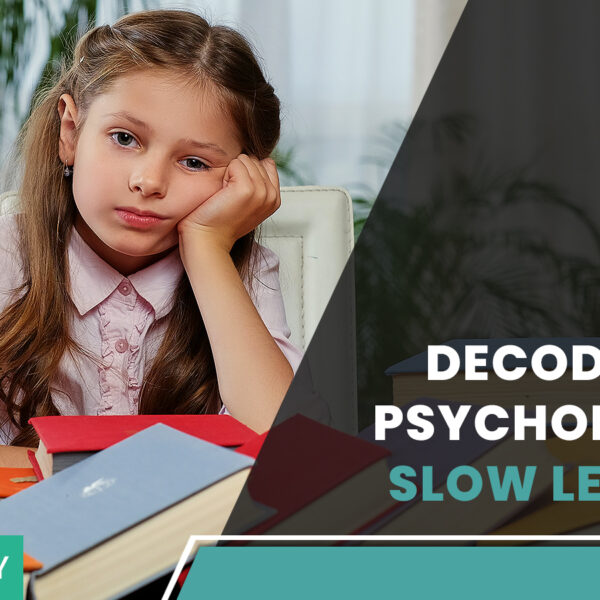If history is to be believed, some of the greatest minds in the field of Arts, Sciences, and Humanities were slow starters or slow learners. It is said that Albert Einstein’s teachers were worried about his learning speed and wanted him to drop out. Thomas Edison’s father did not believe that his child could learn as well as other students and the story repeats for Winston Churchill and Charles Darwin too. They all went on to gift humanity with some of the biggest discoveries, inventions, and leadership lessons. This goes on to establish the fact that slow learners can etch chapters in history that are as memorable as any other child in their class.
The aftermath of COVID-19 threw the world into a frenzy, it affected the physical, mental, and emotional health amongst many of us. But the rarely discussed aftermath of the pandemic is the lingering effect of the haphazard educational journey that children were forced into during this period. Students are still recovering from the damage, that widened already pre-existing gaps via the speed of learning and advantages of opportunities. Some of the worst affected during the pandemic were slow learners. And if you are a parent or guardian of a slow learning, the journey is going to be a bit patchy but not as unconceivable as you may imagine. If you are struggling to understand your child’s needs and support them in their learning journey, remember you are not alone and there are diverse pedagogical tools combined with the right resources and guidance that can help your child in their journey.
Assess and Gauge
It is not always easy to look for signs and assess if the child is a slow learner. Low grades, neglect for studies, and what may look like a lack of effort could be evident signals of the need for an assessment. It’s important to first understand the difference between a slow learner and a child with a learning disability as one should not be confused with another and would need different remedial approaches. Many psychology-driven assessment tests can map reading and writing abilities to understand if the child is a slow learner. Slow learners are usually known to have above-average intelligence scores. Now that you know, focus attention on understanding their minds.
Understand and Support
Young slow learners are usually unable to explain their needs. They may find it tough to use verbal communication to express themselves clearly. They can also have visual or auditory learning challenges as well as the skill to retain information. They also can suffer in social surroundings for the lack of social skills. Understand these and ease them into the faith that they are normal and all they need is additional support to plant their feet firmly. Be patient with their needs and always be accessible when they need you. They may have trouble with their attention span and would need spaces to learn where there are fewer distractions. While it is important to enable them to learn better, it is also important to avoid comparisons and aggressive competition with peers, this could affect their self-esteem. Give them space, time and an abundance of support.
Remedy the Cause
Slow learners when assisted by the right learning plan, tools, and aid can be on par with sharp and average learners. The remedial pedagogical tools adapt the existing curriculum to the needs of the individual student. Digital technology along with a keen human teacher work together to ably plan this approach. Methodology tends to be creative which involves games, stepping outside the classroom, learning with nature, and interactive sessions which focus on the mode from which the student gains the most. More engagement, lesser homework, and even involvement of peer tutors on many occasions help the cause.
Motivate and Inspire
Slow learning as a concept is steeped in stigma in developing countries such as India. While the efforts to work for the betterment of different categories of learners is a work in progress, we are making progress at a snail’s pace. It is imperative to provide your child with additional support, indulge them in their interests that go beyond academics which can also elevate their self-esteem, and work alongside their teachers and mentors in designing a plan that is curated especially for them. Every slow learner is a different individual and is unique in their abilities. Motivate them, recognise their efforts, and communicate openly with them and you will see them flourish and bloom.
While the above steps do help students from urban and semi-urban landscapes who have access to robust digital technology, the inequity in digitization keeps learners from rural and last-mile villages still far away from reaching the mainstream. UNESCO 2021 State of Education Report cited that only 19% of schools across India have access to the Internet. The gap is staggering and infrastructure reforms that bridge this gap of digital privilege are the need of the hour.

